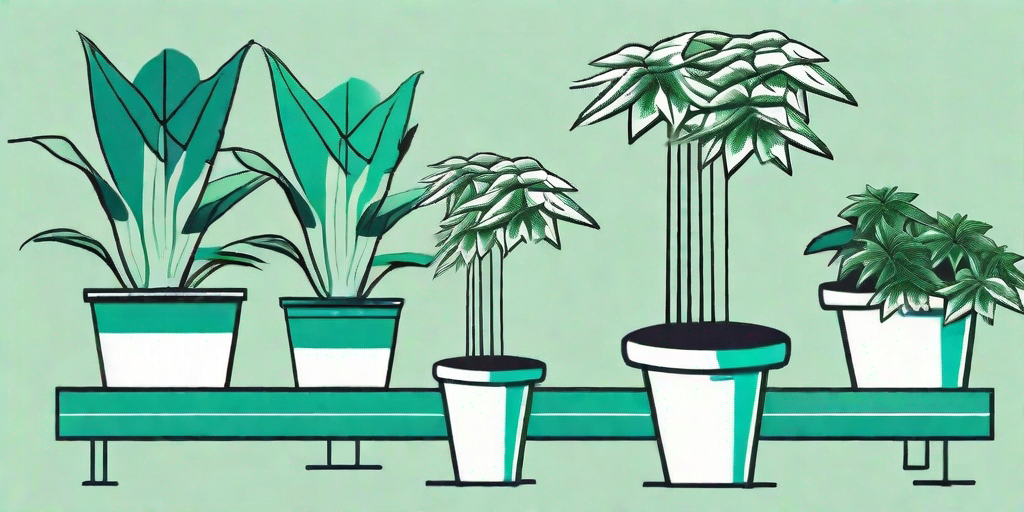
Ah, the Fatsia Japonica! A plant with a name that sounds like a spell from Harry Potter, but is actually a lush, tropical beauty that can transform your garden into a verdant paradise. But how, you may ask, do you propagate this magical plant? Well, dear reader, strap on your gardening gloves, grab your trowel, and prepare to have your mind blown by the secrets of Fatsia Japonica propagation.
Understanding the Fatsia Japonica
Before we dive into the propagation process, let's take a moment to appreciate the Fatsia Japonica. Native to Japan, South Korea, and Taiwan, this evergreen shrub is known for its large, glossy leaves and clusters of creamy white flowers. It's like the Audrey Hepburn of the plant world - timeless, elegant, and always in style.
But don't let its sophisticated appearance fool you. The Fatsia Japonica is a hardy plant that can withstand a variety of conditions. It's like the Bear Grylls of the plant world - tough, resilient, and can survive in the wild (or your garden).
The Art of Propagation
Now, let's get down to business. Propagation is the process of creating new plants from the parent plant. It's like cloning, but without the scary science fiction implications. And when it comes to Fatsia Japonica, there are two main methods of propagation: stem cuttings and seeds.
But before you start chopping up your plant or harvesting its seeds, there are a few things you need to know. So, let's delve into the nitty-gritty details of each method.
Stem Cuttings
The first method of propagation is by stem cuttings. This is the plant equivalent of a hair transplant. You take a piece of the parent plant, plant it in soil, and voila! A new plant is born. But, like a hair transplant, it's not as simple as it sounds.
First, you need to choose the right stem. Look for a healthy, mature stem that has at least two to three leaf nodes. Then, using a sharp, clean knife, cut the stem at a 45-degree angle. This will increase the surface area for root growth and make your plant look like it's been to a fancy hair stylist.
Next, remove the lower leaves and dip the cut end in rooting hormone. This will stimulate root growth and make your plant feel like it's at a spa. Finally, plant the cutting in a pot filled with well-draining soil, water it well, and place it in a warm, bright location. Then, sit back, relax, and watch your new plant grow.
Seeds
The second method of propagation is by seeds. This is the plant equivalent of having a baby. You take the seeds from the parent plant, plant them in soil, and wait for a new plant to sprout. But, like having a baby, it requires patience and care.
First, you need to collect the seeds. Fatsia Japonica produces clusters of black berries, each containing a few seeds. Collect these berries, remove the seeds, and let them dry for a few days. Then, plant the seeds in a pot filled with well-draining soil, water them well, and place the pot in a warm, bright location. Then, like an expectant parent, wait for your new plant to emerge.
FAQs
Now that we've covered the basics of Fatsia Japonica propagation, let's tackle some frequently asked questions. Because, let's face it, we all have questions, especially when it comes to something as complex and mysterious as plant propagation.
When is the best time to propagate Fatsia Japonica?
The best time to propagate Fatsia Japonica is in the spring or early summer. This is when the plant is actively growing and has plenty of energy to devote to creating new plants. It's like trying to start a new project when you're feeling fresh and energized, rather than when you're tired and cranky.
How long does it take for a Fatsia Japonica cutting to root?
It usually takes about 4-6 weeks for a Fatsia Japonica cutting to root. So, if you're the impatient type, you might want to take up knitting or Sudoku to pass the time.
Can I propagate Fatsia Japonica in water?
Yes, you can propagate Fatsia Japonica in water. However, it's generally easier and more successful to propagate it in soil. Plus, soil is less likely to spill and make a mess on your carpet.
Conclusion
So, there you have it - the secrets to successfully propagating Fatsia Japonica in your garden. Whether you choose to propagate by stem cuttings or seeds, remember to be patient, provide the right conditions, and most importantly, have fun. After all, gardening is not just about growing plants, but also about growing your knowledge, skills, and appreciation for nature.
Now, go forth and propagate! And remember, in the world of gardening, every plant is a potential new adventure.















